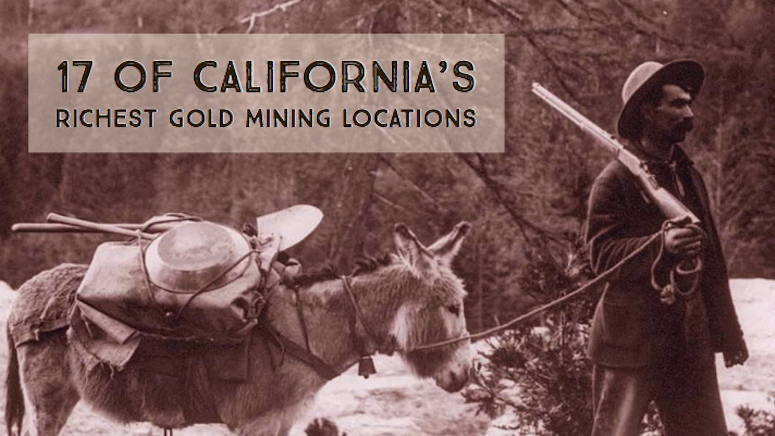
Gold has been mined on almost every corner of California. Although mining is merely a shadow of what it once was, there are still many places where a recreational gold prospector can do very well searching for gold.
Below are some of the richest places to prospect for gold in California. Check the current regulations on these areas. Many are still open to prospecting, but some areas are now parts of National Parks, private lands, active claims, and other designations.

California is STILL one of the richest gold mining regions on Earth. These 17 sites are just some of the richest in California, but there are literally THOUSANDS of areas you can explore.
1. American River
The American river was the first place where gold was discovered in California. In 1948 James Marshall, an employee of Sutter mill discovered gold on the South Fork of the American River. It set off the largest gold rush in American history. Although the easily accessible gold is long gone, the American River is still a great place for a recreational gold prospector to explore. Gold can be found all along the river, although some places may have richer ore than others. One place to check out is the Auburn State Recreation Area the covers parts of the Middle and the North forks of the river. Another excellent location is the Michigan Bluff area on the middle fork. Also look for areas of ancient tertiary river channels high above the existing river which also contain a lot of gold.
On the South Fork American River, the Marshall Gold Discovery State Historic Park, Mount Murphy Bridge and the area north of Chili Bar are also appropriate locations to pan for gold.
2. Randsburg
Randsburg is located between Boron and Ridgecrest along Highway 395. The small mining town was established in 1895 when the Rand Mine was created following the discovery of gold in the area. Mining ended in the early 1900s abut some of the lode mines were opened in the 1980s and 1990s.
The area to the north of the town is quite rich with prospectors recoding many valuable finds there over the years. Water is limited here but metal detecting can be very productive for nugget hunters.
More than half of the gold in Kern County was produced in this area and Yellow Aster Mine accounted for most of it. The placer deposits at Goler Wash (Gulch), about 3 miles northeast of Garlock, present a good opportunity to prospectors. However, the gulch which was initially worked in the 1890s seems to have an active claim on it.
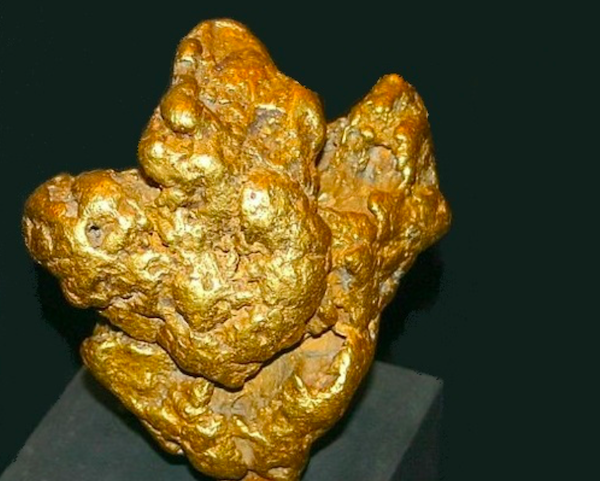
This amazing 156-ounce gold nugget was found by a metal detectorist in the desert near Randsburg. It was found in 1977. There are still nuggets (although much smaller) like this being found today by prospectors.
3. San Gabriel River
This is another river that produced a significant amount of gold during the early years of the California gold rush. Gold was first discovered on the San Gabriel River in 1855. The mining boom on the river ended in the 1930s and since then small-scale mining has been ongoing along the river.
One thing to note is that the much of the richest area is now off-limits to mineral exploration due to recent land designation, so do your research before you go.
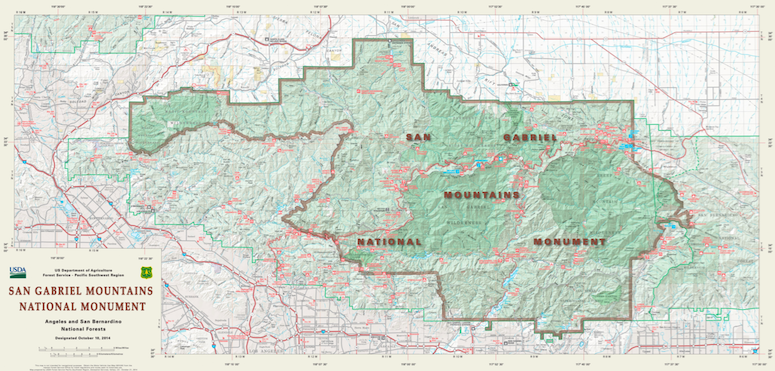
Be aware that the recently designated San Gabriel Mountains National Monument has resulted in a ban on prospecting within the boundary. This excludes prospectors from some of the historically richest areas along the San Gabriel River.
The East Fork of the river for example is now within the San Gabriel Mountains National Monument where restrictions on gold panning exist. This section, which extends into the Angeles National Forest, was the most productive. However, the gulches and creeks in the Azusa Canyon and other parts of the river can be rewarding for prospectors.
Read: The Forgotten Mines north of Los Angeles
4. Dale Mining District
The Dale Mining district was established in 1881 when gold was discovered in the area. It covers parts of San Bernardino and Riverside Counties, and is located about 18 miles east of Twentynine Palms. Several gold mines were established in the area with the two most productive mines being the Supply Mine and the OK mine. Other notable mines are Carlyle and Gold Crown.
Mining continued in the area until the Second World War when the last remaining mines were closed down. Today the district is popular with gold prospectors who use dry washing and metal detecting to find gold. The region has gold close to the surface and this makes it easy for miners to recover as much gold as possible. Most of the mine areas are outside the Joshua Tree National Park and can be accessed using a 4WD vehicle with high clearance.
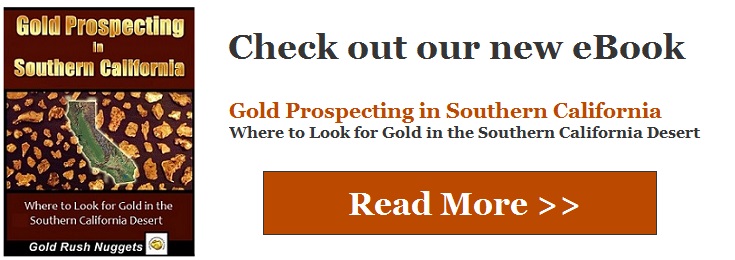
5. Bodie
Bodie is a historic mining district in gold-rich California. Gold was discovered in the area where the current Bodie town lies in 1859 and by the mid-1870s it was a successful boom town with several gold mines and thousands of miners.
However, the rich ore was quickly mined out and the town began to decline. Today body is a ghost town but the region around the town still offers a lot of promise to gold prospectors. Estimates indicate 1.25 million ounces of gold may still be buried in the town.
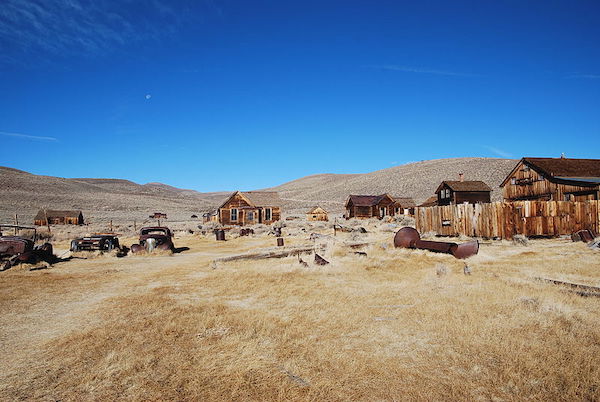
Bodie is one of California’s most well-preserved ghost towns. It is a popular destination, getting around 200,000 visitors each year.
It is now one of the best preserved mining towns in California and popular with visitors. The areas around Bodie Bluff and adjacent ridges are potential gold producers. However, it’s important to check which parts are U.S. Bureau of Land Management lands open to prospecting and which ones are privately owned.
Read: Gold Detecting on Private Land – Tips to Gain Access
6. Yuba River
This is one of the best California’s richest rivers to visit if you want to find some real gold. The river was at the heart of the original California gold rush and still produces gold nuggets for the tenacious gold prospectors. The river replenishes every year bringing with it new alluvial material that contain gold.
One of the best places to prospect for gold on the river is the South Yuba River. In decades past, dredgers found pounds and pounds of gold in the gravels of the Yuba River. Dredging is now banned in California, but other methods will still produce a lot of gold in some areas.
The South Yuba River State Park offers an opportunity to pan about 20 miles of the river. Other locations on the river include Pleasant Valley Road in Bridgeport and Keleher Picnic Area on Yuba River in the Tahoe National Forest near the town of Washington.
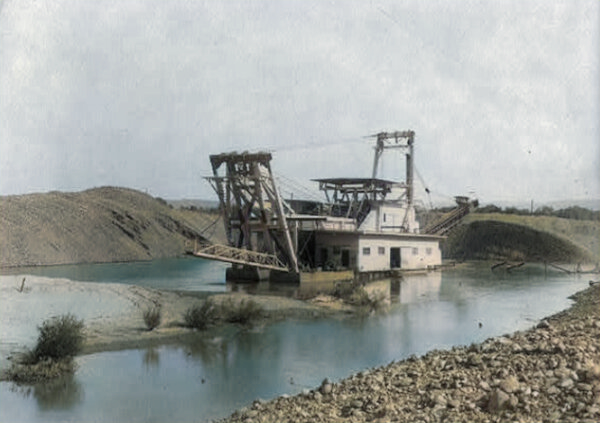
Bucket dredges were used on many of the gold-bearing rivers of the Sierra Nevada. This is one of many dredges that operated on the Yuba River near Marysville. 1908, colorized.
Also Read: Gold of the Yuba – Huge Dredges Mining the River
7. Malakoff Diggings
The Malakoff Mine was the largest hydraulic mine in the world in the 1880s but created a lot of devastation downstream on Yuba river which resulted in a court case. The case was decided in 1884 when the presiding judge gave the North Bloomfield Gravel Mining Company which operated the mine an injunction stopping the damping of the tailings from the mine in the river. This marked the end of the mining operations at the mine. The mine was later turned into a state park.

The Malakoff Diggin’s in California’s Mother Lode Country. This is the largest hydraulic mining site in the USA located about 26 miles from Nevada City off Hwy. 49. The site is now a state historic park that allows gold panning on Humbug Creek on the stretch that runs from the China Gardens to Relief Hill Bridge.
8. Death Valley
The Death Valley has a long history of gold mining that dates back to 1848. Today most of the Death Valley lands forms part of the Death Valley National park. The park has about 20 patented claims and about a half unpatented ones. Miners can visit the park and prospect for gold. Being a controlled prospecting area the park still has lots of gold in the ground but many of the good areas are now off-limits.
Heavy mining is only allowed with stricter environmental standards that require approval of a Plan of Operations. The last mine to operate in Death Valley was the Billie Mine which closed in 2005.
Lost & Abandoned Mines in Death Valley, California
9. Feather River
The Feather River like most rivers in California was home to hundreds of thousands of miners during the first California gold rush in 1849. Today the river still offers an excellent opportunity to recreational gold miners to prospect and find gold. If you want to find some real goals then you should also consider the small creeks and streams that feed the main river. This small waterways still have rich placers as most prospectors overlook them.
Other locations include the stream gravels near Cherokee City, Marysville and Yuba City. On the North Fork near Belden and below Oroville Dam where the diversion dumps alluvial deposits in the outlets, are also great areas to explore and increase chances to find gold.

Read: Where to Prospect for Gold in the Feather River
10. Sixteen to One Mine
The Sixteen to One Mine was established in 1911. The mine is famous for its high-grade gold and quickly became one of the most productive mines within the Allegheny mining district in California. It produced more than one million ounces of gold. The high quality quartz gold from the mine is famously sought after by jewelers around the world.
Today the sixteen to one mine is a large property sitting on 550 acres of land made up of the original Sixteen to One Mine, and the neighboring mines and claims such as the Ophir, the Red Star, the Rainbow, the Twenty one and the Tightner. It is the oldest hard-rock gold mine in California that is still operational. This is a private mine, but there are certainly areas in the surrounding mountains that are unclaimed and likely to contain decent gold.
11. Kennedy Mine
The Kennedy mine was the deepest gold mine in the California Mother Lode. The mine operated until 1942 when it was closed down before being reopened much later as a tourist attraction. Located one mile northwest of the town of Jackson, the mine produced gold worth $34.3 million.
Today you can visit the mine and pan for gold both on the mine property and on the surrounding area which are managed by the Kennedy Mine Foundation. The Kennedy Tailing Wheels system used at the mine was unique and its giant wheels are a singular attraction as a marvelous mining relic.
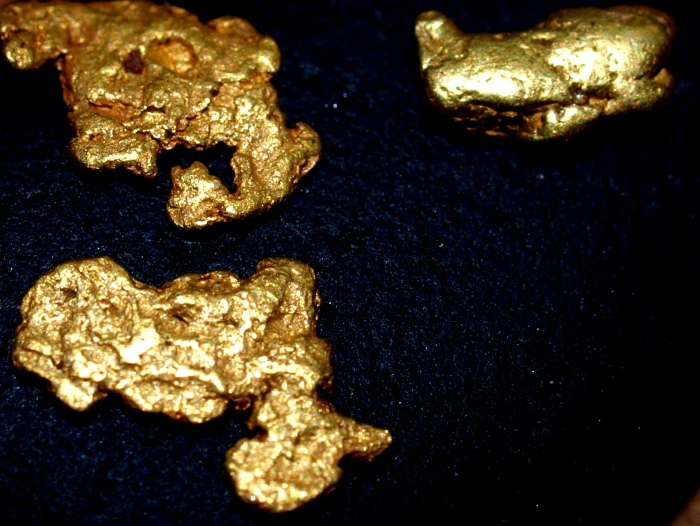
12. Empire Mine
The Empire mine located in Sierra Nevada Mountains is now a state historic park. Before being closed down in 1956 the mine was one of the oldest, richest and deepest gold mines in the state. It operated for more than 100 years, producing 5.8 million ounces of gold. Today, the park offers guided tours of the mine. In addition, prospectors can prospect for gold on the park and on lands surrounding the park.
The network of shafts within the mine covers 367 miles and is completely filled with water. The park, which can be accessed through 10791 East Empire Street in Grass Valley offers guided tours of the mine area.
13. Calico
Calico was established in 1881 following the discovery of both gold and silver in the area. It quickly became one of the richest silver producing towns in California. Almost $20,000,000 worth of silver was produced in Calico with the Silver King Mine contributing more than $10 million in production.
However, it only took 15 years for the rich ore to be exhausted and the town was abandoned. Today the area around the original town is popular with gold prospectors who come looking for gold and minerals. The region has proved to be quite rich with many prospectors reporting success.
The town is now under the Calico Ghost Town Regional Park. The Lucy Lane Museum inside the park offers guided tours and a gold panning experience. The Maggie Silver Mine which was active in the 1880s is the only mine that is safe to explore.

14. Eagle’s Nest Mine
The Eagle’s Nest Mine is one of the best-known gold mines in California that produce high-grade crystalline gold. The mine is located in the Michigan Bluff mining district within the gold-rich Placer County.
The site is only 20 miles from Coloma, the site of the original discovery that started California’s gold rush. It was created in 1982 by consolidating several gold specimen producing mines in the area. The gold specimen mined in the Eagle’s Nest mine are found in narrow shallow quartz veins.
Beautiful and interesting (some in octahedral crystals) gold specimens have been mined from this location.
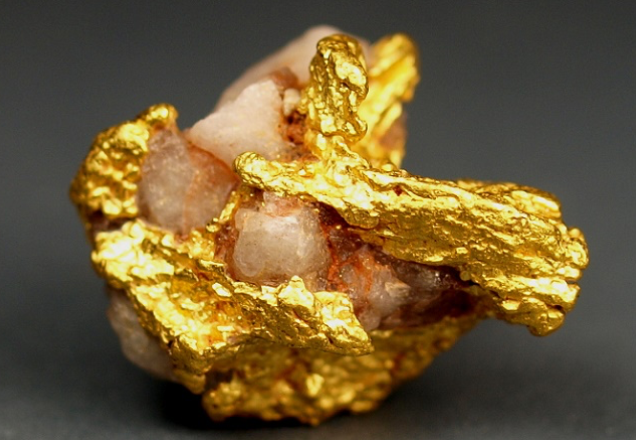
15. Weaverville
Weaverville is located in Trinity County, way up in the northernmost section of California. The town is one of the historical gold boom towns in California, but many prospectors overlook the area. Gold was discovered here in 1850 following the news of the discoveries on the American River which spurred people to start prospecting rivers all around California.
Weaverville is still a good place to look for gold, which can be found in the rivers, creeks and gulches surrounding town. Weaver Creek and its tributaries as well as Trinity River are some of the richest in the basin are rich with gold.
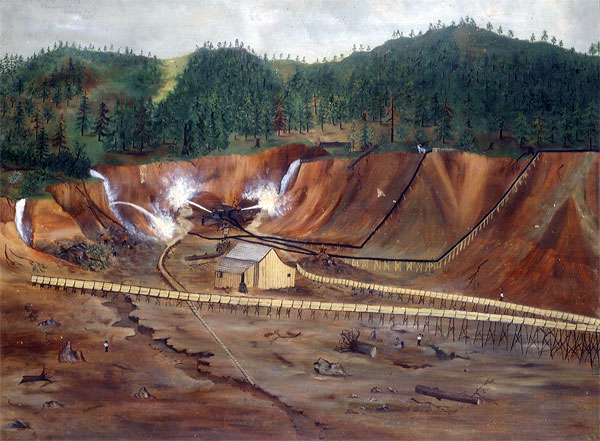
This c1870 illustration depicts one of the largest hydraulic mines in California at the time, the La Grange Mine. It is situated west of Weaverville and used massive hydraulic monitors to wash gravel and capture gold.
16. Klamath River
The Klamath River was one of the richest sources of gold during the early days of the Californian gold rush. Gold was discovered on the river and on pretty much all its tributaries and creeks throughout Siskiyou County. One of the richest deposits were on French Gulch and at Yreka. Today prospectors still find lots of gold on the river although the main river is heavily claimed. Some of the best places to prospect for gold on the Klamath River include the Copper Creek, the Happy Camp, the Scott River, the Salmon River, the Trinity River, the Clear Creek, and the Oak Bar Creek. This is still a great area for prospectors willing to hike into remote areas for a few days.
The gravels Near the towns of Orick and Orleans as well as the length of the river along Highway 96 including Somes Bar are also rich in placer gold. Other productive areas include several creeks such as Dillon, Humbug, Thompson, Independence and Schutts Gulch.
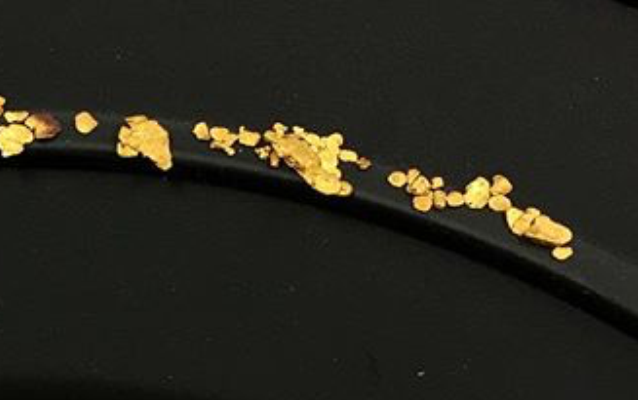
17. Kern River
The Kern River is one of the most popular gold prospecting rivers in California. Gold was first discovered on the river in 1851 following the start for the California gold rush. If you are new to the river, the best place to start is the Keyesville Recreational Mining area.
This area is open for public prospecting which makes it perfect for anyone new in the area. Greenhorn Creek is the site of the first gold discovery near the river. Many prospectors report finding decent-sized gold nuggets here. Other locations to explore include the Hart Park area and the canyon off of Highway 178.
Next: Early Spring Gold Prospecting in the Desert
How to Locate Gold Veins in Hard Rock
Can You Actually Make Money Mining for Gold
How to Use a Metal Detector for the Best Results
